¶ 3.2 Hints for Asset Configuration
Creating a diagram of the Energy Island helps to define all the assets and to be sure to have them all represented in the system.
The most important aspects are:
- Listing the assets hierarchy (to which parent one asset is linked with).
- Listing the asset's types (pv, heat pump, ...) in order to easily identify them.
- Listing the asset connection to heat and electricity domains.
- Foreseeing which asset should be aggregated (this is optional as virtual assets can act on their own and connections can be "bypassed" to another asset).
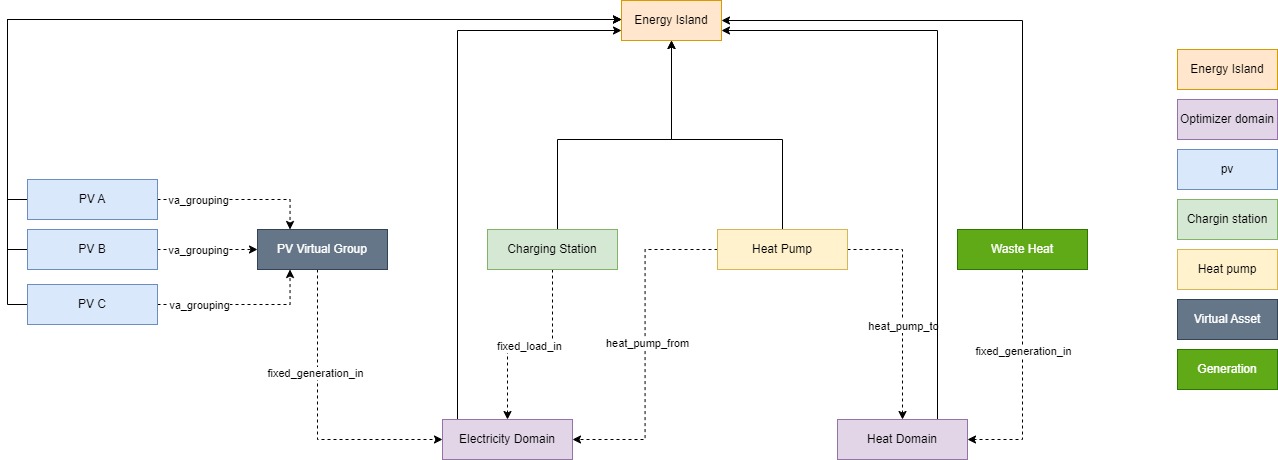
¶ Creating a generic Asset
Go on the asset management page (/management/asset) and click on the add button at the bottom of the page.

For example, you can fill out the information of a Heat Pump as follows:
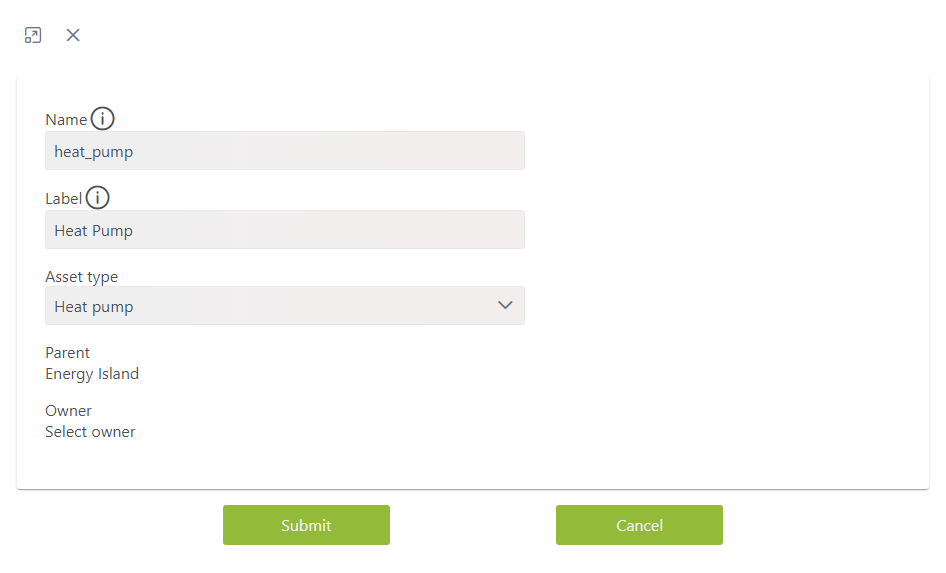
When creating an asset, don't forget to create its measurement in the system.
More information regarding measurement configuration can be found in 04.0 Measurements Configuration
¶ Linking an asset to an user
Using the previously created Heat Pump, you can now link it to a user.
You have to ensure first that you have the user needed (/admin/users), if not you can create one, by clicking on the "Add user" button.
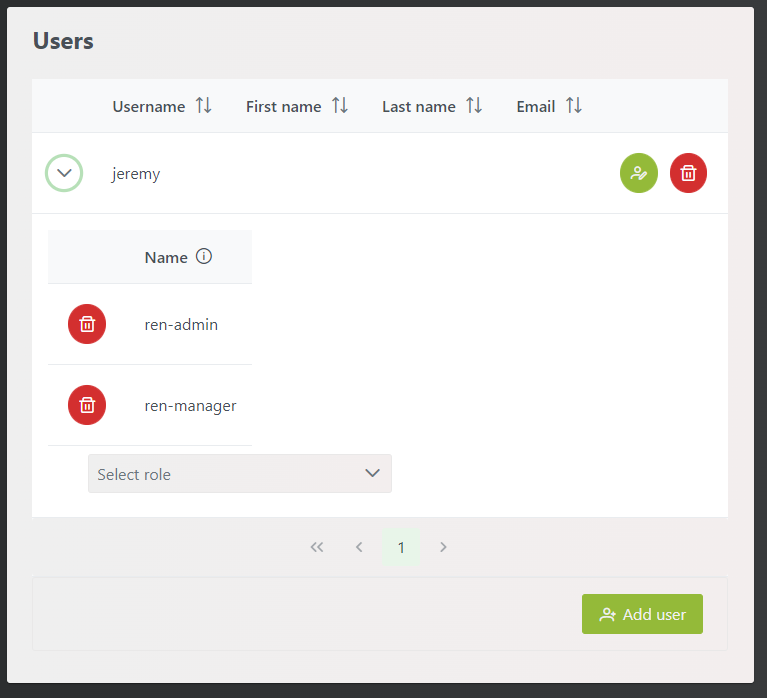
When creating a user, an asset has been created with the type "User".
Therefore, you should see the user in the list of assets:

Finally, you can create a connection between the asset Heat Pump and the user asset e.g., the connection type "Owner".
To do so, open the asset connection of the asset user

Click on the "Add connection" button

Fill out the information by selecting the asset (here the heat pump) to connect to and the connection type (here owner):
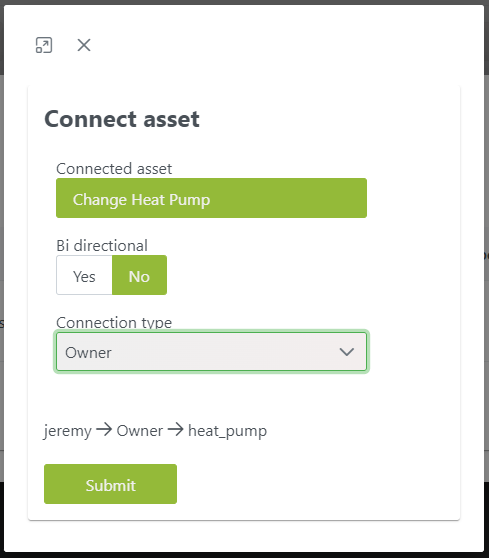
After submitting, you will see the newly created asset connection:
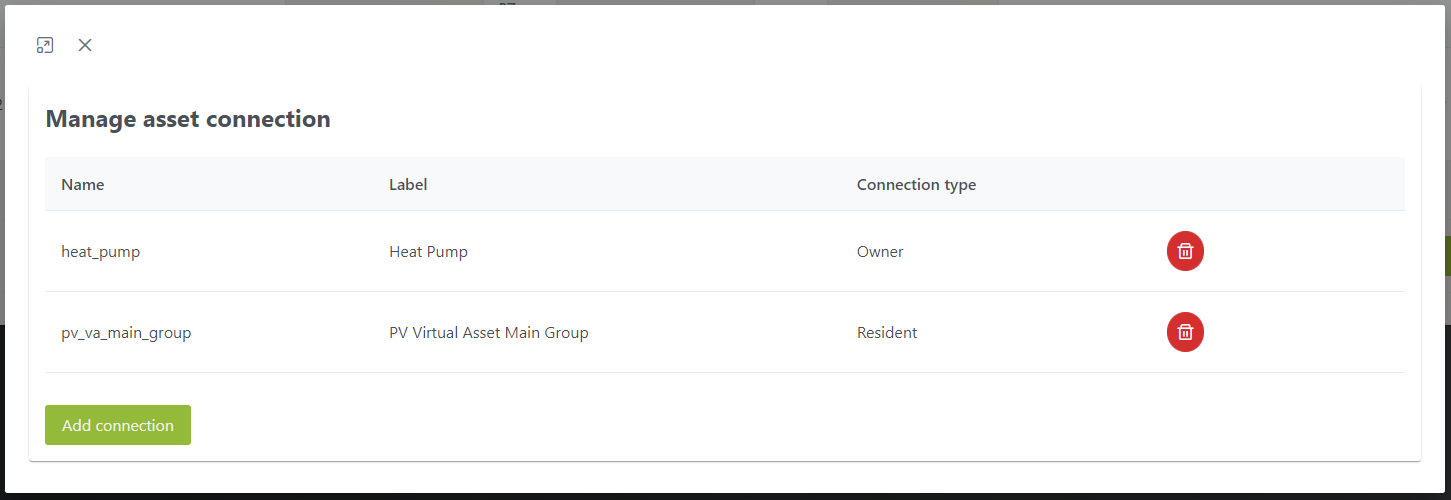
This means that, for example, user demands related to the heat pump will be shown to the owner user.
¶ Examples of energy island assets
¶ Simple Asset (via the Charging Station)
The same way as described previously, an asset representing the Charging Station can be created.
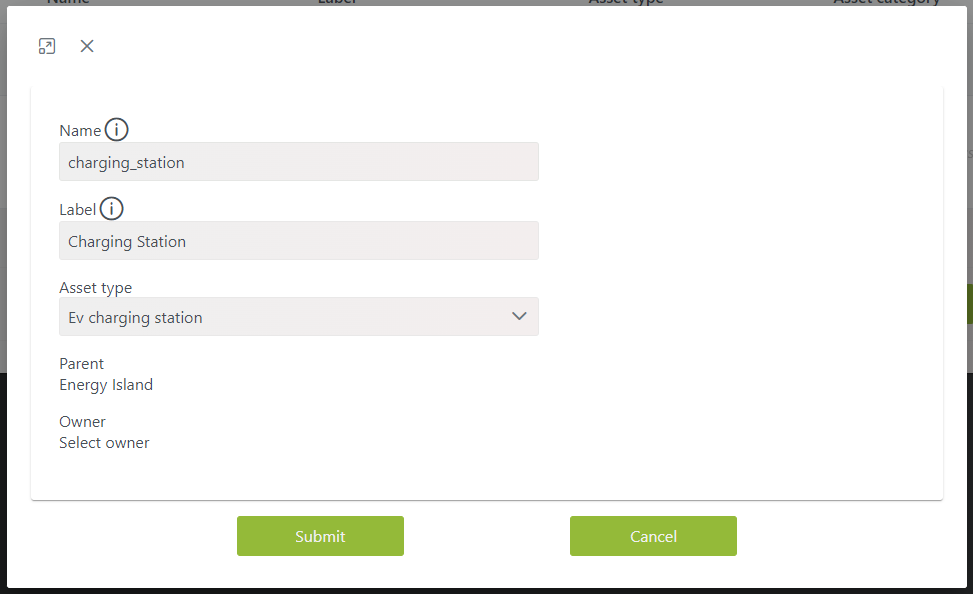
Once created, connect it to the Electricity domain by creating a new asset connection between the two elements:
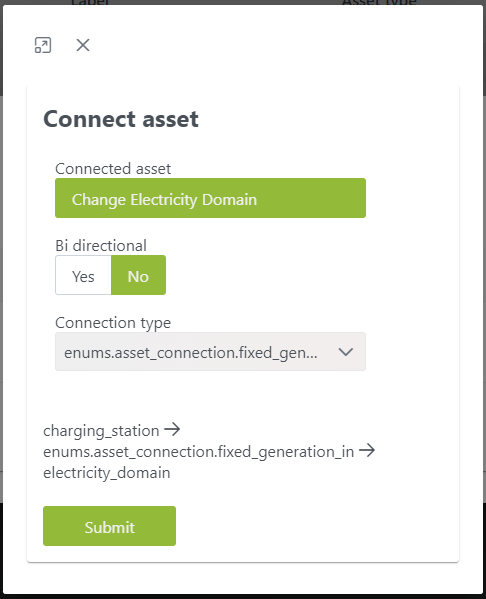
You will then see this connection as follow on the Charging Station asset:

¶ Aggregated Assets (via the PV panels)
The following shows you a step-by-step guide on how to aggregate multiple PV assets to one Virtual Asset.
First, create each individual PV assets:
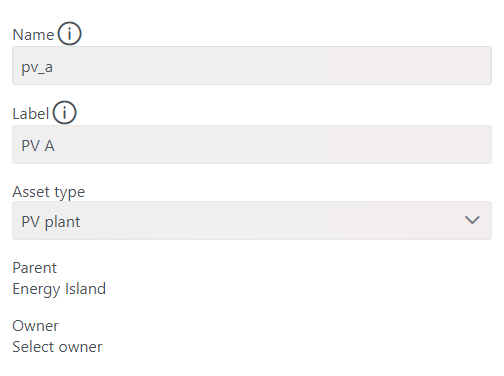
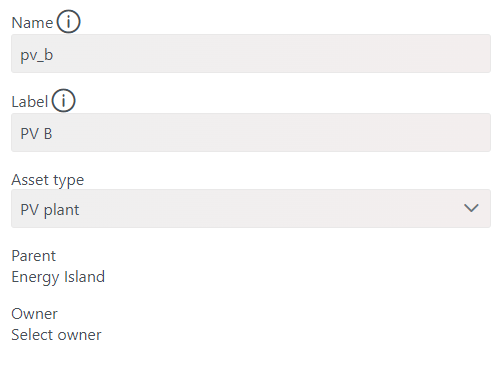

Then, create the Virtual Asset for the PV group:
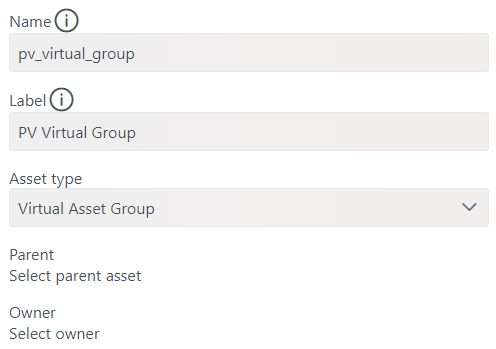
Create the connections from the PV group to each asset:

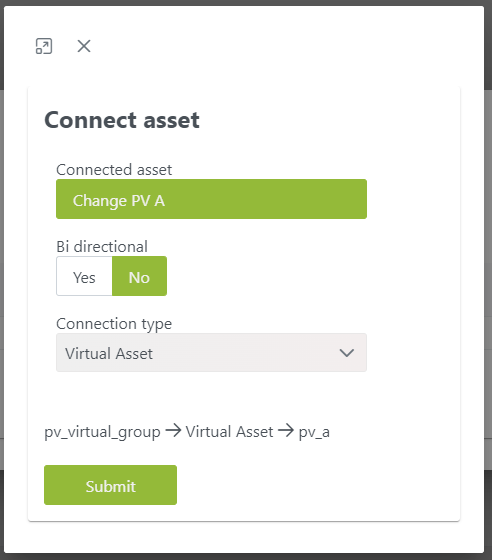
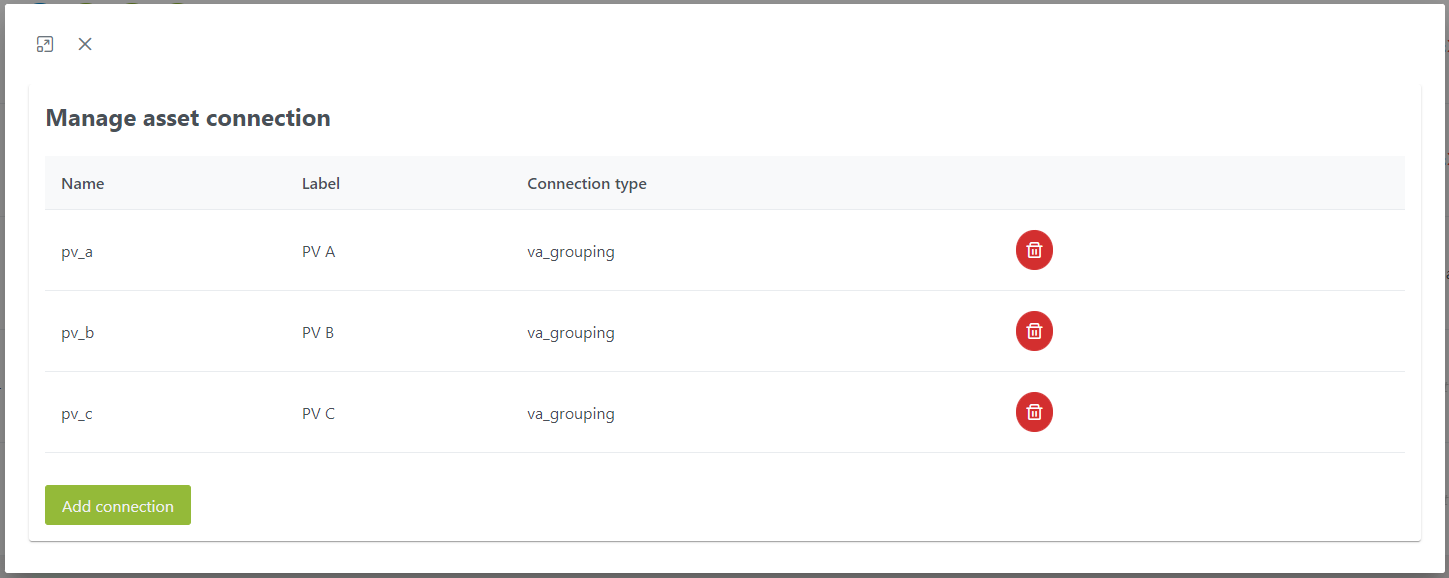
You can now create an aggregation of the asset (which will aggregate the measurements of the PVs).
First, click on the edit button on the PV Virtual group asset:

Then, you can add a new configuration in which you can select the measurements of the connected assets and create one or multiple outputs depending on your needs.
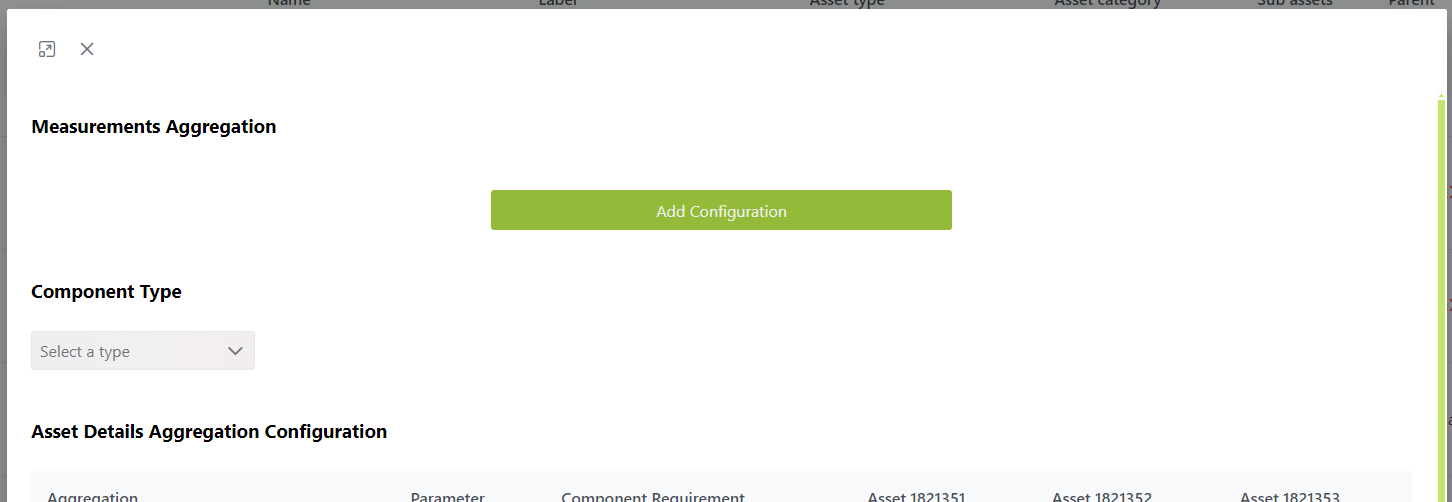
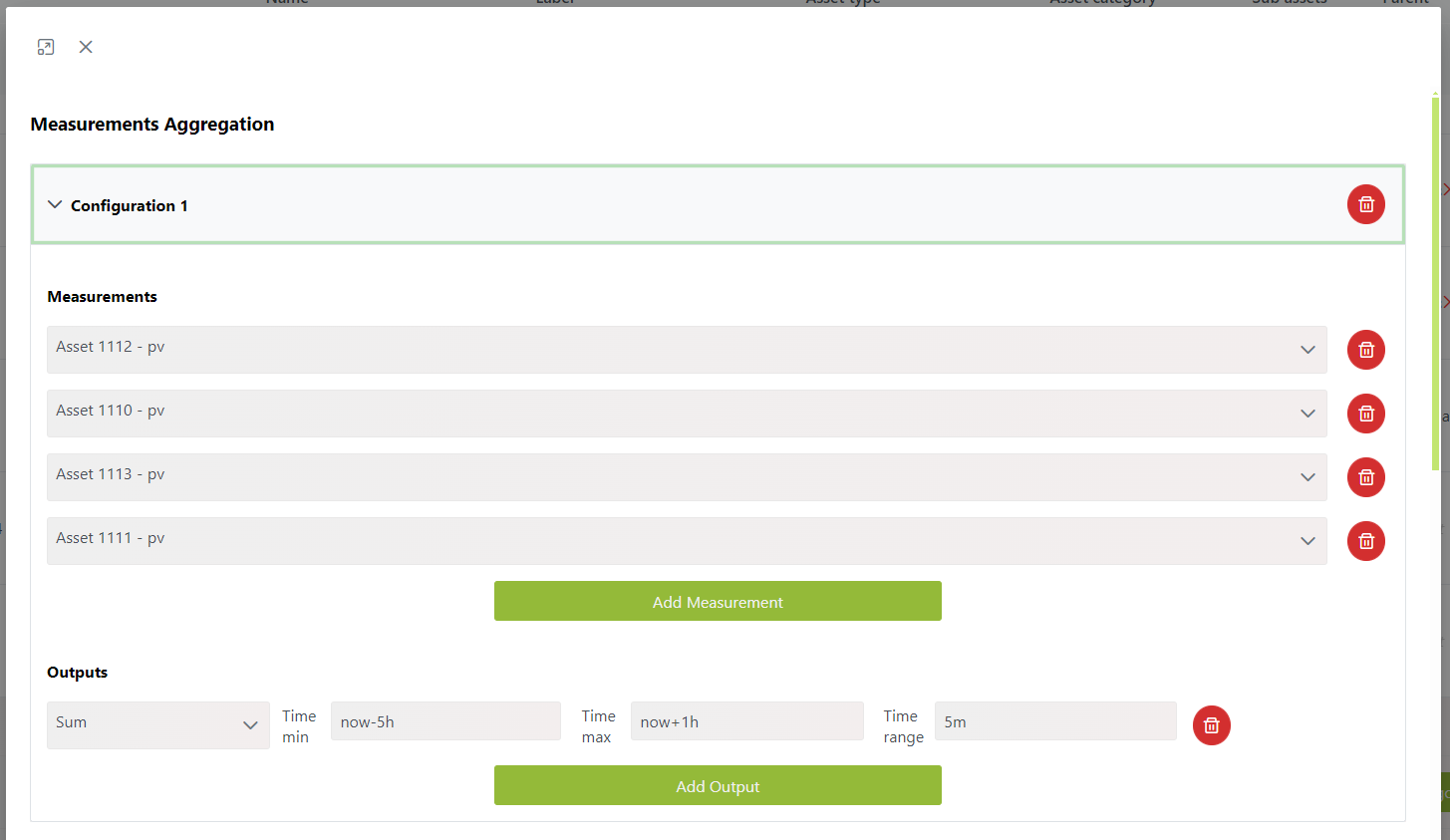
¶ Multi domain assets (Heat pump)
You may need to create assets that are interacting with multiple domains (heat and electricity).
¶ Single Asset (via the Heat Pump)
Reusing the asset created in the first section, all you need to do is to connect it to the two domains as follows:

¶ Aggregated Assets (via a group of Heat Pump)
As described in the "Aggregated Assets (via the PV panels)" section, the creation of its Virtual Asset follows exactly the same procedure.
Heatpumps belong to two different domains (electricity and heat).
Therefore, such assets have two different measurements:
- One related to the consumption (energy used)
- One related to the production (energy transformed)
This means that you have to create two configuration in the asset configuration:
- One related to all the measurements for the consumption
- One related to all the measurements for the production
Instead of manually connecting this asset to two domains, by creating each of these asset connections, they can be automatically created.
To do so, open the asset aggregation configuration for this asset.

Under the measurement aggregation section, you can select the "Heat Pump" component in the component types. On the right side you are now able to select two domains (from and to).


Depending on the selected component type, you are able to select one, two or no domains.